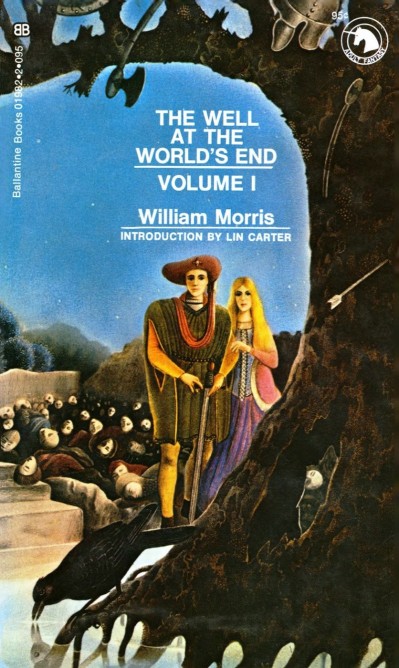 The well at the world's end, a tale. By: William Morris - William Morris MD
The well at the world's end, a tale. By: William Morris - William Morris MD
Jue Ago 22, 2024 1:35 am

[/center]
pdf | 19.89 MB | English | Isbn:9781979610988 | Author: William Morris MD | Year: 2017
[/center]
About ebook: The well at the world's end, a tale. By: William Morris (Complete set volume I and II).: High fantasy novel
The Well at the World's End is a high fantasy novel by the British artist, poet, and author William Morris. It was first published in 1896 and has been reprinted a number of times since, most notably in two parts as the 20th and 21st volumes of the Ballantine Adult Fantasy series, in August and September 1970. Plot summary: Using language with elements of the medieval tales which were his models, Morris tells the story of Peter, King of Upmeads, and his four sons, Blaise, Hugh, Gregory, and Ralph. These four sons decide one day that they would like to explore the world, so their father gives them permission. From that point on, the plot centers on the youngest son, Ralph. Ralph's explorations begin at Bourton Abbas, after which he goes through the Wood Perilous. He has various adventures there, including the slaying of two men who had entrapped a woman. That woman later turns out to be the Lady of Abundance, who later becomes his lover for a short time. In one episode Ralph is staying at a castle and inquires about the Lady of the castle (the so-called Lady of Abundance), whom he has not yet seen. Descriptions of her youth and beauty suggest to him that she has drunk from the well at the world's end. "And now in his heart waxed the desire of that Lady, once seen, as he deemed, in such strange wise; but he wondered within himself if the devil had not sown that longing within him...." A short time later, while still at the castle, Ralph contemplates images of the Lady and "was filled with the sweetness of desire when he looked on them." Then he reads a book containing information about her, and his desire to meet the Lady of Abundance flames higher. When he goes to bed, he sleeps "for the very weariness of his longing." He fears leaving the castle because she might come while he is gone. Eventually he leaves the castle and meets the Lady of Abundance, who turns out to be the same lady he had rescued some weeks earlier from two men. When he meets her this time, the lady is being fought over by two knights, one of whom slays the other............ William Morris (24 March 1834 - 3 October 1896) was an English textile designer, poet, novelist, translator, and socialist activist. Associated with the British Arts and Crafts Movement, he was a major contributor to the revival of traditional British textile arts and methods of production. His literary contributions helped to establish the modern fantasy genre, while he played a significant role in propagating the early socialist movement in Britain. Born in Walthamstow, Essex, to a wealthy middle-class family, Morris came under the strong influence of medievalism while studying Classics at Oxford University, there joining the Birmingham Set. After university, he trained as an architect, married Jane Burden, and developed close friendships with the Pre-Raphaelite artists Edward Burne-Jones and Dante Gabriel Rossetti and with the Neo-Gothic architect Philip Webb. Webb and Morris designed a family home, Red House, then in Kent, where the latter lived from 1859 to 1865, before moving to Bloomsbury, central London. In 1861, Morris founded a decorative arts firm with Burne-Jones, Rossetti, Webb, and others: the Morris, Marshall, Faulkner & Co. Becoming highly fashionable and much in demand, the firm profoundly influenced interior decoration throughout the Victorian period, with Morris designing tapestries, wallpaper, fabrics, furniture, and stained glass windows. In 1875, Morris assumed total control of the company, which was renamed Morris & Co. Although retaining a main home in London, from 1871 Morris rented the rural retreat of Kelmscott Manor, Oxfordshire. Greatly influenced by visits to Iceland, with Eiríkr Magnússon he produced a series of English-language translations of Icelandic Sagas............
https://rapidgator.net/file/65e96a782ddd3f1492dd042365bc62f7/
https://filestore.me/y5k9wsllrck6
[/center]
Permisos de este foro:
No puedes responder a temas en este foro.


